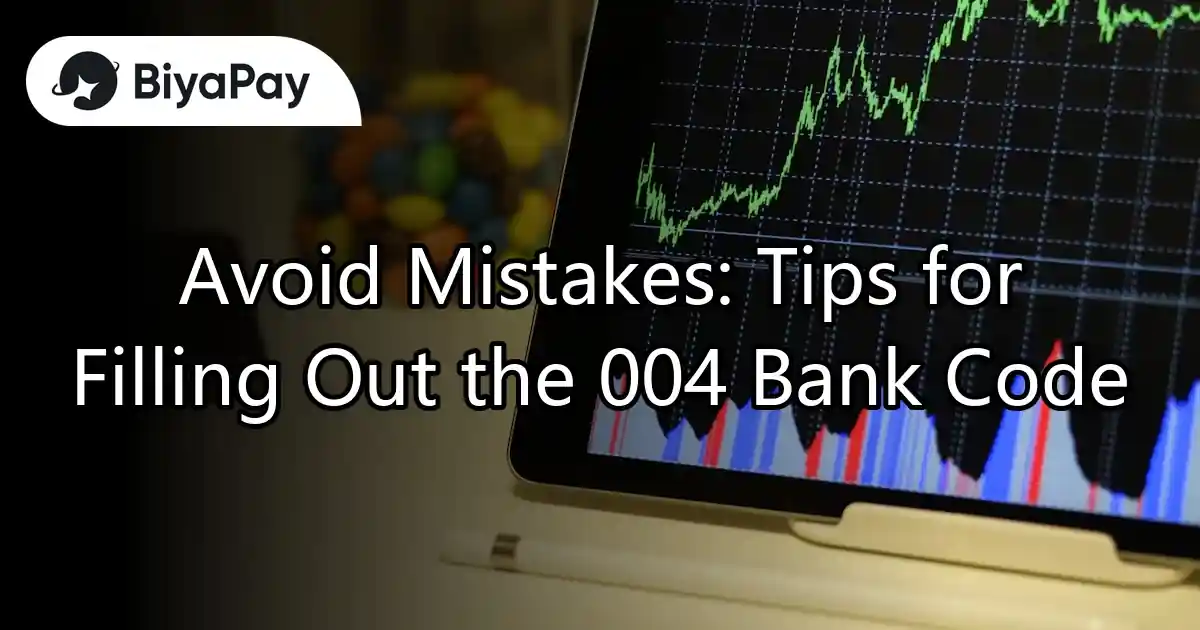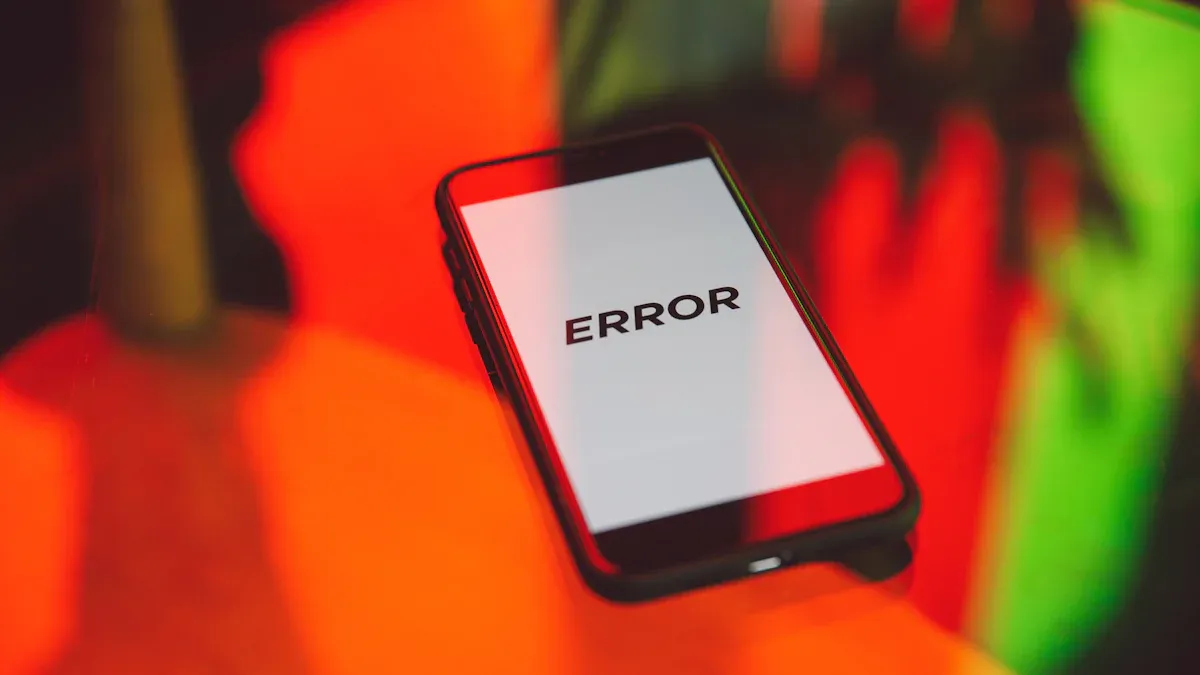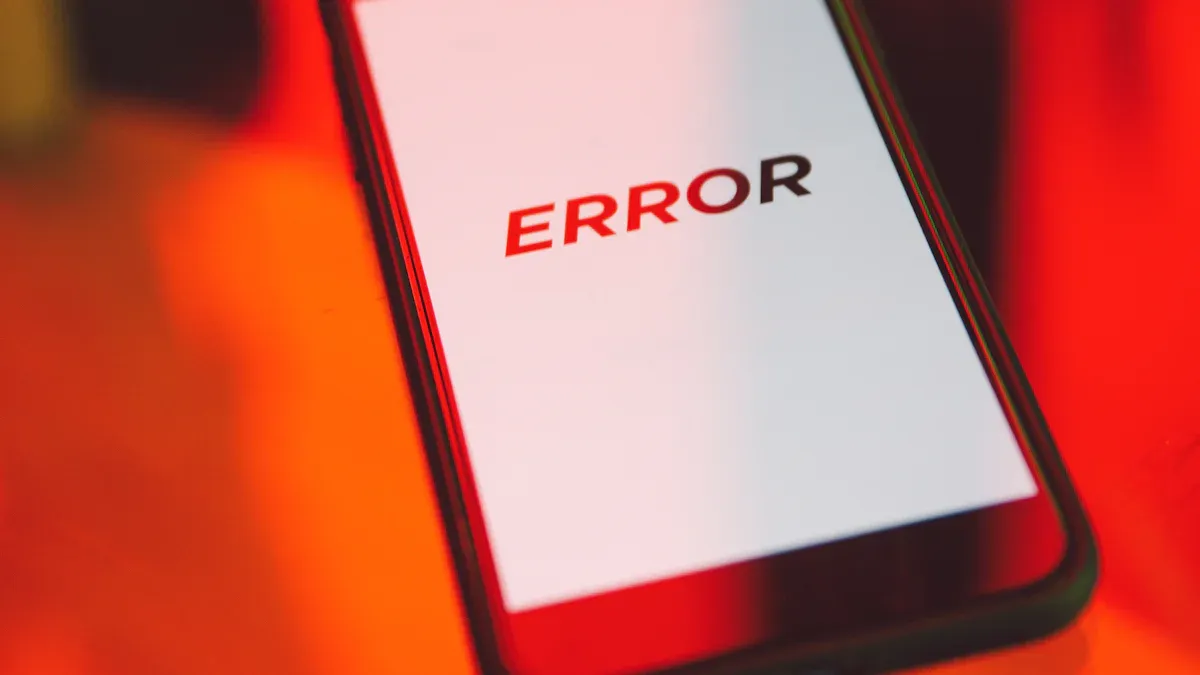- EasyCard
- Trade
- Help
- Announcement
- Academy
- SWIFT Code
- Iban Number
- Referral
- Customer Service
- Blog
- Creator
Avoid Mistakes: Tips for Filling Out the 004 Bank Code

Image Source: pexels
When filling out bank forms or conducting local transfers, you must correctly input the 004 bank code, which represents HSBC Bank. The bank code, branch code, and account number each serve different functions. If you confuse these details, it may lead to funds being credited incorrectly or transfer delays. Sometimes, errors can also incur additional fees, affecting the efficiency of your fund processing.
Key Points
- Correctly filling out the 004 bank code (HSBC’s exclusive three-digit code) is crucial for successful local transfers; do not confuse it with the branch code or account number.
- Use only Arabic numerals and English when filling out, without spaces or punctuation, and carefully verify each field to avoid transfer failures or extra fees due to formatting errors.
- Utilize bank statements, online banking, and official websites to find the correct bank code and branch code; proactively contact bank customer service if you’re unsure about any field.
- Copy official data and paste it into a plain text editor to check formatting, which can effectively reduce manual input errors and improve data accuracy.
- After completing the form, always double-check all details to ensure the bank code, branch code, and account number are correct, safeguarding funds and transfer efficiency.
004 Bank Code

Image Source: pexels
Definition
When handling bank transactions, you often encounter the bank code. The bank code is a three-digit number used to identify different banks in Hong Kong. The 004 bank code is the exclusive identifier for HSBC Bank. When you see the 004 bank code, you know it refers to HSBC Bank. Each bank has its own code, for example, Hang Seng Bank is 024, and Bank of China (Hong Kong) is 012. These numbers are unique, so you can use them confidently.
Tip: You should only use Arabic numerals to fill out the bank code, avoiding Chinese characters or other symbols.
Uses
When conducting local transfers or filling out bank forms, you must correctly input the bank code. The 004 bank code is only applicable for transfers between local banks in Hong Kong. You cannot use it for international remittances. When filling out forms, the bank code, branch code, and account number are all essential. You need to first enter the bank code (e.g., 004), followed by the branch code and account number. This ensures the bank can accurately process your transfer instructions. If you enter the wrong bank code, funds may be transferred to the wrong bank, or the transfer may fail.
- You can find the correct bank code on bank statements, online banking, or the official website.
- Many online forms provide dropdown menus to help you select the correct bank code, reducing the chance of errors.
Filling Out the Form
Field Identification
When filling out bank forms, you must first clearly distinguish the purpose of each field. Generally, bank forms will list “Bank Code,” “Branch Code,” and “Account Number” separately. You will see clear labels on the form, such as “Bank Code,” “Branch Code,” and “Account Number.”
The bank code is typically three digits, for example, the 004 bank code represents HSBC Bank. The branch code identifies your specific branch, which may have three to four digits. The account number is your personal bank account number, with a length that varies by bank.
Many Hong Kong banks’ online forms now include smart prompt features, utilizing artificial intelligence and machine learning technologies, which automatically determine whether fields are filled correctly based on your input. These technologies have proven effective in financial transactions and identity verification, improving the accuracy of data identification. For example, banks use past filling records and common error patterns to promptly alert you if the branch code or account number is mistakenly entered in the bank code field.
Additionally, Canvas fingerprinting and WebGL technologies are applied to enhance the security and accuracy of online forms. These technologies can perform multiple tests and statistical feature analysis based on your device’s characteristics, reducing the chance of field confusion. By carefully noting the labels and prompts on the form, you can significantly reduce errors.
Tip: If you’re unsure about a field, check the bank’s official website for guidance or contact customer service.
Correct Steps
To correctly fill out the 004 bank code and related information, follow these steps:
- Locate the “Bank Code” field and enter the three-digit 004 bank code. If you’re using HSBC Bank, this field must be filled with “004.”
- Next, in the “Branch Code” field, enter your branch’s code. This code can usually be found on your bank statement or online banking account.
- Finally, in the “Account Number” field, enter your bank account number. Ensure every digit is accurate.
- When filling out, use only English and Arabic numerals. Do not use Chinese characters, punctuation, or other special symbols, as the bank system may not recognize your data.
- After completing all fields, double-check each entry to ensure no mistakes or omissions.
| Field Name | Correct Filling Method | Example (HSBC Bank) |
|---|---|---|
| Bank Code | Enter only three digits | 004 |
| Branch Code | Fill according to bank instructions | 123 |
| Account Number | Refer to statement or online banking | 456789012 |
By following these steps, you can significantly reduce transfer issues caused by incorrectly filling out the 004 bank code or other details. Correctly identifying each field and carefully checking is the first step to ensuring fund security.
Common Mistakes

Image Source: pexels
Field Confusion
When filling out bank forms, it’s easy to mistakenly enter the branch code or account number in the bank code field. This error is common for first-time users or those unfamiliar with the form’s format. For example, you might enter the account number digits in the “Bank Code” field, causing the bank to fail to identify the correct bank. You might also mistakenly enter the 004 bank code in the branch code field, leading to errors in transfer instructions.
Tip: Each field is clearly labeled; carefully verify to ensure each number is entered in the correct place.
Numerical Errors
When manually entering numbers, you often encounter the following errors:
- When entering long numbers, the system may automatically convert them to scientific notation (e.g., 1.23E+11), making verification difficult.
- If the bank code or branch code starts with a 0, the system may automatically omit the leading 0, turning the 004 bank code into 4, resulting in incorrect data.
- Sometimes, entering fractions (e.g., 1/3) causes the system to convert them into date formats, making the data incorrect.
- After pasting data, improper format settings may prevent corrections to already incorrect values even if the format is later changed.
These errors are mostly caused by automatic formatting in Excel or Google Sheets. Before entering data, set the cell format to “Text” to prevent the system from automatically converting number formats.
Note: Incorrectly entering bank details can lead to transfer delays, incorrect fund crediting, or additional fees (calculated in USD based on the exchange rate at the time). You should double-check all details after filling to ensure accuracy.
Finding the Bank Code
Official Sources
To confirm the correct bank code, start by checking your bank statement. Statements typically list your bank name, branch code, and account number. You can also log into online banking and view the personal information page, which displays the relevant bank code. If you have doubts about the information, contact bank customer service directly. Customer service staff will provide the correct bank code based on your branch and account.
Some Hong Kong banks use multiple bank codes, and different branches may use different codes. You should select the correct code based on the actual branch. For example, HSBC’s 004 bank code applies to most branches, but some exclusive service centers may have specific codes. Before filling out forms, confirm that the branch and bank code match.
Tip: Bookmark the bank’s official website for quick access to bank code information in the future.
Online Lookup
Many online forms now include dropdown menus or lookup functions. You simply select the bank name in the form, and the system automatically fills in the correct bank code. This significantly reduces manual input errors. Some bank websites also offer bank code lookup tools; by entering the branch name or region, the system displays the corresponding bank code and branch code.
When filling out online transfers or automatic transfer forms, make use of these features. They save time and ensure data accuracy. If the form lacks an automatic lookup function, verify the information on the bank’s official website or contact customer service.
Note: Do not rely solely on online search results, as some unofficial websites may have outdated or incorrect information. Always use the bank’s official data to ensure the bank code is accurate.
Practical Tips
Copying Data
When filling out bank forms, you should copy official data whenever possible. This reduces errors from manual input. You can copy the bank code, branch code, and account number directly from bank statements, online banking, or the official website.
Some people manually transcribe data, which can lead to missing digits or incorrect sequences. Copying data ensures every digit is accurate.
Tip: After copying data, paste it into a notepad or plain text editor to check for extra spaces or symbols before pasting into the form. This prevents formatting errors and ensures the bank system can correctly read your data.
Double-Checking
After filling out all details, carefully review them again. Follow these steps for verification:
- Check if the bank code is correct, e.g., HSBC Bank should be 004.
- Confirm that the branch code and account number match official records.
- Check for extra spaces, punctuation, or other symbols.
- If in doubt, contact bank customer service immediately.
Each time you verify details, you significantly reduce the risk of transfer failures or incorrect fund crediting. Bank transfers involve funds, and any small error could lead to delays or additional fees (calculated in USD based on the exchange rate at the time). Make it a habit to double-check after filling to safeguard your funds.
Note: If you’re unsure about anything, do not guess. Proactively contact the bank to ensure all details are accurate.
By correctly filling out the 004 bank code, branch code, and account number, you can effectively avoid transfer delays or incorrect fund crediting. Remember these key points:
- Verify the bank code first, then check the branch code and account number.
- If in doubt, proactively contact the bank for clarification.
Feel free to share your experiences or ask questions in the comments below to enhance your financial knowledge!
FAQ
Can the 004 bank code be used for international remittances?
You cannot use the 004 bank code for international remittances. International remittances require a SWIFT Code, such as HSBC’s SWIFT Code, “HSBCHKHHHKH.”
What happens to funds if the bank code is entered incorrectly?
If you enter the wrong bank code, funds may be delayed or credited incorrectly. The bank may charge additional fees (calculated in USD based on the exchange rate at the time).
Where can I find the branch code?
You can find the branch code on bank statements, online banking, or the official website. If in doubt, contact bank customer service for clarification.
Do I need to add spaces or punctuation when filling out bank details?
You should not include spaces or punctuation in the bank code, branch code, or account number to avoid system recognition errors.
Does the 004 bank code apply to all HSBC Bank branches?
Most HSBC Bank branches use the 004 bank code. Some exclusive service centers may have different codes. Verify the code used by your branch.
Accurately filling out the 004 bank code (HSBC) is crucial for seamless local transfers, and a digital financial platform can further enhance your cross-border fund management efficiency. BiyaPay offers a one-stop solution, enabling trading in U.S. and Hong Kong stocks without offshore accounts, helping you leverage USD, HKD, and other assets to seize global investment opportunities.
Supporting 30+ fiat and digital currencies with real-time exchange rate transparency, plus global remittances to 190+ countries with remittance fees as low as 0.5%. A 5.48% annualized yield savings product with no lock-in period ensures flexibility. Sign up for BiyaPay today to combine HSBC’s transfer convenience with BiyaPay’s versatile tools for efficient, secure investments!
*This article is provided for general information purposes and does not constitute legal, tax or other professional advice from BiyaPay or its subsidiaries and its affiliates, and it is not intended as a substitute for obtaining advice from a financial advisor or any other professional.
We make no representations, warranties or warranties, express or implied, as to the accuracy, completeness or timeliness of the contents of this publication.




Contact Us
Company and Team
BiyaPay Products
Customer Services
is a broker-dealer registered with the U.S. Securities and Exchange Commission (SEC) (No.: 802-127417), member of the Financial Industry Regulatory Authority (FINRA) (CRD: 325027), member of the Securities Investor Protection Corporation (SIPC), and regulated by FINRA and SEC.
registered with the US Financial Crimes Enforcement Network (FinCEN), as a Money Services Business (MSB), registration number: 31000218637349, and regulated by FinCEN.
registered as Financial Service Provider (FSP number: FSP1007221) in New Zealand, and is a member of the Financial Dispute Resolution Scheme, a New Zealand independent dispute resolution service provider.




















